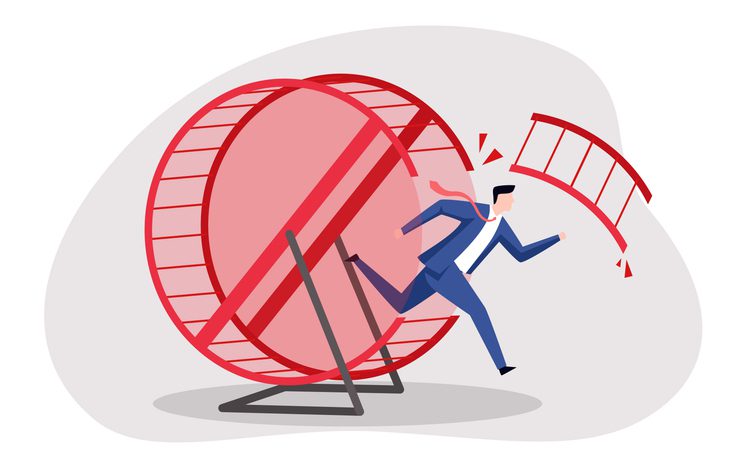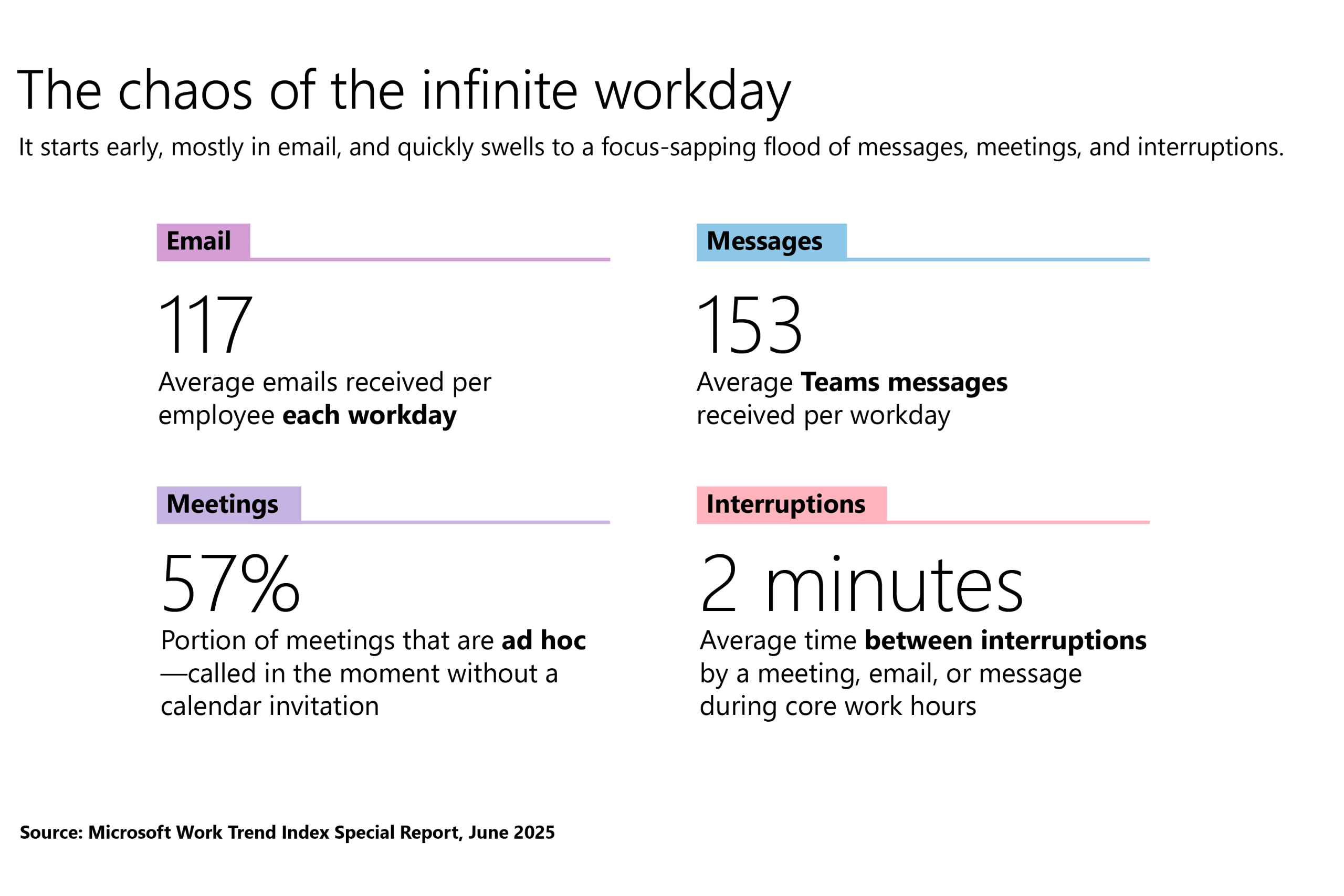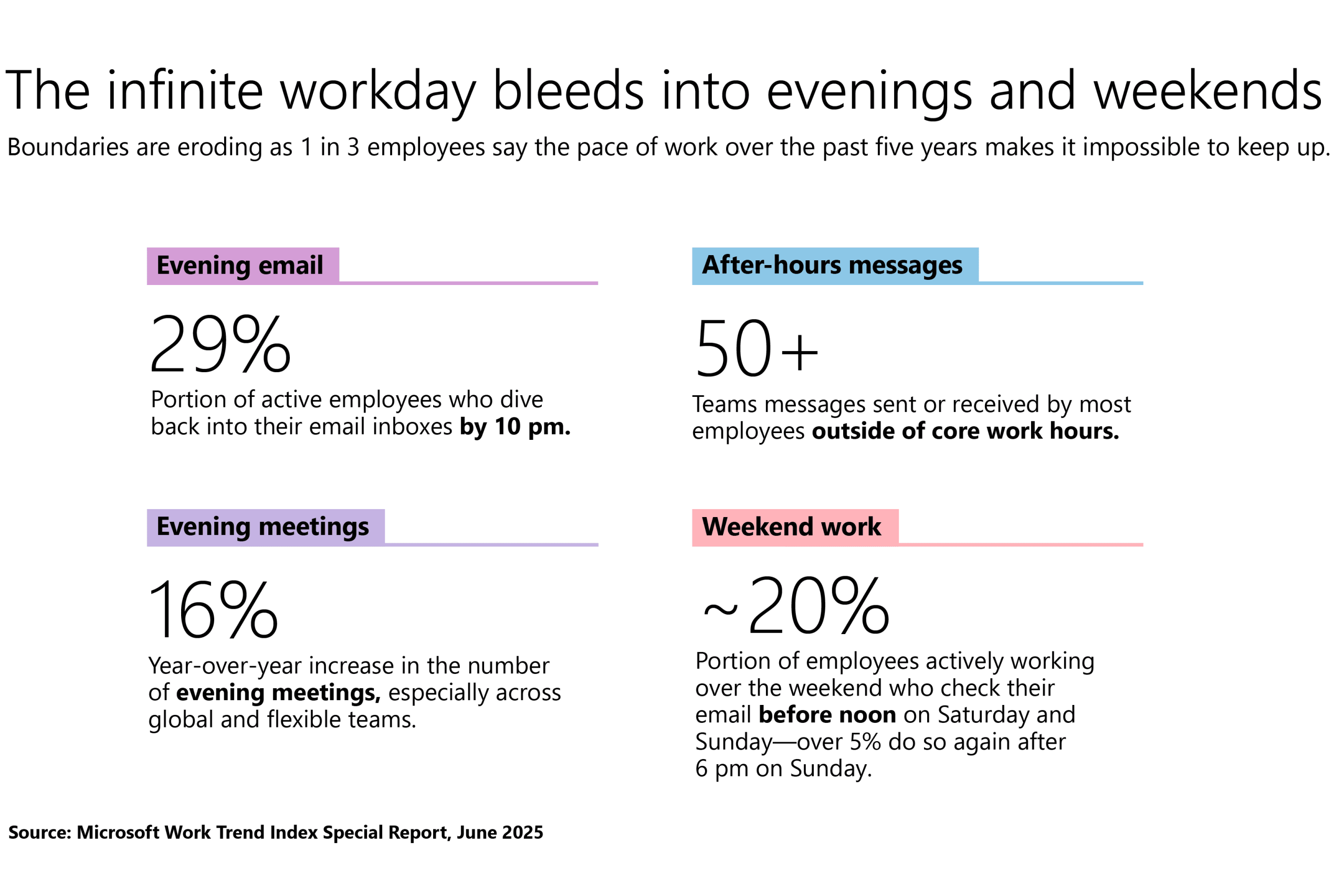
Have you ever been at work and thought to yourself, “When is this day going to end?” Well, with infinite workdays taking over, it might not, unless you practice strong boundaries to protect work-life balance.
Research by Microsoft found employees worldwide are starting their workdays earlier and ending later, plus working on the weekends, wearing away boundaries and creating a loop of infinite workdays.


Dangers of Infinite Workdays
Forty percent of Americans already report working 41–50 hours a week, and 8% say they work more than 51 hours weekly, according to Kickresume in 2024. A 2023 survey by ADP Canada, conducted with Maru Public Opinion, found 53% of Canadians felt negatively about work and 30% felt tired and overworked.
Overworking has negative consequences on brain health, supports bad habits, compromises personal care, and carries more dangers, including:
- Burnout or stress, which are bad for health
- Lack of sleep, which negatively affects health and work
- Worse work-life balance that hurts productivity and job satisfaction
- Employees quit for better balance, thus exacerbating the issue of overworking by more strain falling on those who stay, potentially leading to even more turnover
Combat Overworking
Ending or limiting infinite workdays is highly dependent on leaders setting boundaries for themselves and their team. Balanced workdays for all start at the top.
- Create your own boundaries to limit work hours and follow through to lead by example.
- If you need to work after hours, don’t send emails or messages to your team. Schedule messages to be sent during work hours, unless it’s truly urgent.
- Encourage taking breaks, signing off at the end of the day, and taking PTO.
- Be flexible with scheduling. Stagger the team’s schedules with overlapping core hours to support those who need to work later.
- Allow time blocking on calendars for deep work, breaks, or buffers between tasks and meetings.
- Enact no meeting times to allow time for deep work and projects.
- Leverage contingent workers to ease the burden on core staff.
Make Balance the Goal
Never working outside of standard business hours may be an unrealistic standard for your industry. Overtime, working late, or signing on after hours to handle unexpected needs can be reasonable expectations. But if overworking and infinite workdays are the norm at your workplace, examine why and evaluate how to reduce the need for people to consistently work long days.
Setting boundaries to limit infinite workdays equips you and your team to be more productive, happy at work, and efficient during work hours.